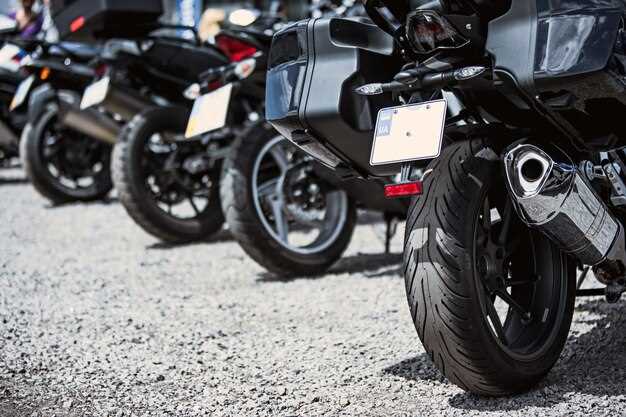
Motorcycle tires are a crucial component that significantly impacts safety, performance, and overall riding experience. Whether you own a cruising bike, a sport bike, or an adventure motorcycle, selecting the right tires can enhance handling, stability, and traction. The market offers a plethora of tire options, tailored to various riding styles, weather conditions, and terrain types. Understanding these factors is essential for any motorcycle enthusiast looking to maximize their riding experience.
Different types of motorcycles require tires specifically designed to meet their unique performance characteristics. For instance, sport bikes benefit from tires with a softer rubber compound that offers better grip during aggressive cornering, while touring motorcycles generally favor long-lasting, durable tires that provide comfort on long-distance rides. Additionally, off-road and adventure motorcycles require rugged tires that can handle uneven terrains without compromising traction and control.
Moreover, tire selection should consider various external factors such as climate, riding frequency, and personal preferences. Seasonal changes can influence the choice between all-season and specialized tires. Furthermore, those who ride frequently may need to replace tires more often, prioritizing durability without sacrificing performance. Understanding these nuances will empower riders to make informed decisions, ultimately leading to a safer and more enjoyable journey on two wheels.
Understanding Motorcycle Tire Specifications

Motorcycle tire specifications are crucial for ensuring safety, performance, and longevity of the tires. They provide essential information about the tire’s dimensions, type, construction, and intended use. Understanding these specifications can help riders select the right tires for their specific motorcycle type and riding style.
Key specifications include:
- Tire Size: This is typically denoted in a format such as 120/70ZR17. The first number (120) represents the width of the tire in millimeters, the second number (70) represents the aspect ratio, which is the height of the tire’s sidewall as a percentage of the width. The final number (17) indicates the rim diameter in inches.
- Load Index: This numeric code indicates the maximum load the tire can support at a specified pressure. Higher load indexes denote a greater weight capacity.
- Speed Rating: Represented by a letter (e.g., H, V, W), the speed rating indicates the maximum speed a tire can safely maintain over time. It is crucial for matching tires to the motorcycle’s capability.
- Tread Pattern: The design of the tire’s surface impacts traction and handling. Different patterns are optimized for various conditions, such as wet or dry surfaces, off-road, or touring.
- Construction Type: Tires come in two primary constructions: bias-ply and radial. Bias-ply tires have layers that run diagonally, while radial tires feature layers that run perpendicular to the direction of travel, offering better performance and handling.
- Material Composition: The rubber compounds used in tire manufacturing affect grip, durability, and ride comfort. Softer compounds provide better traction but wear out faster, while harder compounds last longer but may compromise grip.
A thorough understanding of these specifications allows riders to make informed decisions when selecting tires. Consider the motorcycle type, rider weight, and typical riding conditions when evaluating options. Proper tire choice enhances not only performance but also safety while riding.
Matching Tires to Motorcycle Styles: Sport, Cruiser, Dual-Sport
Selecting the appropriate tires for your motorcycle is crucial for performance, handling, and safety. Each motorcycle style has unique characteristics that dictate the type of tire best suited for its intended use. Below is a detailed comparison of tire requirements for Sport, Cruiser, and Dual-Sport motorcycles.
| Motorcycle Style | Type of Tire | Key Features |
|---|---|---|
| Sport | Sport Tires |
|
| Cruiser | Cruiser Tires |
|
| Dual-Sport | Dual-Sport Tires |
|
Sport tires are specifically designed for performance, offering superior grip and responsiveness on asphalt. Their construction enables sharp cornering and fast acceleration, making them the ideal choice for sport bikes. Cruiser tires, on the other hand, prioritize comfort and stability, allowing for relaxed riding over long distances. They typically feature a wider profile and longer-lasting tread patterns, suitable for heavy bikes traveling at slower speeds.
Dual-Sport tires bridge the gap between street and off-road capabilities. These tires must perform well on a variety of surfaces, including dirt, gravel, and pavement. Their tread patterns are designed for traction in varied conditions, providing flexibility for riders who venture beyond the pavement.
Ultimately, the right tire choice can significantly enhance your motorcycle experience, ensuring optimal performance and safety according to your riding style.
Identifying the Right Tire Size for Optimal Performance
Choosing the correct tire size is crucial for maximizing your motorcycle’s performance, safety, and handling characteristics. Each motorcycle model is engineered to work optimally with specific tire dimensions. This dimension is commonly represented by a series of numbers and letters on the tire’s sidewall, indicating the width, aspect ratio, and diameter.
The first number represents the tire’s width in millimeters from sidewall to sidewall. A wider tire generally provides better grip and stability, particularly in corners. However, it may also create more drag and impact fuel efficiency. The second number, known as the aspect ratio, indicates the height of the tire’s sidewall as a percentage of the width. A lower aspect ratio usually results in improved handling and responsiveness, while a higher ratio offers a more comfortable ride.
The diameter, noted in inches, refers to the size of the rim the tire fits. It is essential to match this to your motorcycle’s specifications to ensure proper fitment and performance. An incorrect diameter can lead to misalignment, affecting handling and safety.
When selecting tire size, consider the intended use of your motorcycle. For example, touring bikes may benefit from larger tires for added comfort, while sport bikes benefit from narrower, performance-oriented sizes enhancing agility. Additionally, consult your motorcycle’s manual or the manufacturer’s recommendations as they provide essential information on the optimal tire sizes for different riding conditions.
Lastly, be mindful of how tire size can impact your bike’s geometry. Changing to a significantly different size can alter the motorcycle’s handling characteristics, lead to difficulties in cornering or straight-line stability, and potentially void warranties. Therefore, conducting thorough research and consulting professional advice will ensure your motorcycle performs at its best with the right tire size.
Choosing Between Bias-Ply and Radial Tires
When selecting tires for your motorcycle, understanding the differences between bias-ply and radial tires is crucial. Each type has distinct characteristics that affect performance, handling, and comfort.
Bias-ply tires consist of plies that are layered diagonally, typically at angles of 30 to 40 degrees. This construction allows for increased flexibility, providing a comfortable ride and good grip on uneven surfaces. However, bias-ply tires often feature less stability at higher speeds compared to their radial counterparts, making them more suitable for cruisers and vintage motorcycles where comfort and retro aesthetics are prioritized.
On the other hand, radial tires have plies that run perpendicular to the direction of travel, enabling them to maintain a flatter contact patch with the ground. This design enhances stability, especially at higher speeds, and improves cornering performance due to better grip. Radial tires are generally better for sportbikes and touring motorcycles where performance and handling are crucial.
Another factor to consider is tire wear; radial tires tend to wear more evenly, leading to a longer lifespan. Bias-ply tires may exhibit more uneven wear, especially if not properly maintained. Additionally, radial tires often offer enhanced fuel efficiency due to lower rolling resistance.
Ultimately, the choice between bias-ply and radial tires should align with your riding style and motorcycle type. If you prioritize comfort and classic aesthetics, bias-ply tires may be the right choice. For those seeking performance and stability, particularly at higher speeds, radial tires are typically the better option. Understanding these differences will help ensure you make the right decision for your motorcycle’s needs.
Evaluating Tread Patterns for Specific Riding Conditions
Selecting the right tread pattern for your motorcycle tires is crucial for optimal performance in various riding conditions. Different patterns cater to unique environments, and understanding these can enhance your experience and safety on the road.
Here are some common tread patterns and their suitability for specific riding conditions:
- Slick Tires:
- Best for: Track days and racing.
- Features: Smooth surface without grooves enhances grip on dry pavement.
- Consideration: Poor performance in wet conditions due to lack of water displacement.
- Street Tires:
- Best for: Urban commuting and touring.
- Features: Balanced tread patterns with moderate grooves provide good wet and dry grip.
- Consideration: Versatile for a variety of road conditions but may not excel in extreme situations.
- Adventure/Off-Road Tires:
- Best for: Off-road riding and mixed terrain.
- Features: Deep, aggressive tread patterns designed for loose surfaces like mud, gravel, and sand.
- Consideration: Tread may wear faster on pavement; compromise in smooth road handling.
- All-Weather Tires:
- Best for: Varied weather conditions.
- Features: Multi-directional tread patterns allow for effective water dispersal and grip.
- Consideration: May not provide the same level of grip as specialized tires in extreme conditions.
- Dual-Sport Tires:
- Best for: On-road and off-road versatility.
- Features: Hybrid tread patterns offer a balance of grip on both paved and unpaved surfaces.
- Consideration: Performance may vary significantly based on terrain type.
In conclusion, evaluating tread patterns is essential for matching the motorcycle tires to your riding conditions. Consider the environment you will ride in most frequently and select a tire that enhances both safety and performance.
Maintaining Tires for Longevity and Safety
Proper tire maintenance is crucial for ensuring both the longevity of the tires and the safety of the rider. Regularly checking tire pressure is essential; under-inflated tires can lead to increased wear, decreased fuel efficiency, and compromised handling. It is advisable to check tire pressure at least once a month and before long rides.
Inspecting the tread depth is another key aspect of maintenance. Tires should have adequate tread depth to provide sufficient grip, especially in wet conditions. A simple way to check is by using the penny test; inserting a penny with Lincoln’s head down into the tread can help assess whether the tread depth is still safe. If the top of the head is visible, it’s time to replace the tires.
Regular visual inspections for cracks, bulges, or other signs of damage are important to catch potential issues early. These signs may indicate that the tires are failing and might need replacement. Riding on damaged tires can pose serious safety risks.
Proper alignment and balance of the tires play a significant role in tire longevity. Misaligned tires can lead to uneven wear, which reduces their lifespan and affects the motorcycle’s handling. Regular servicing at a qualified shop will ensure the mechanics of the motorcycle contribute positively to tire performance.
Finally, storing motorcycles with care can also extend tire life. If not in use for an extended period, keeping the motorcycle in a cool, dry place, and ideally elevating it to relieve pressure from the tires, can prevent flat spots and other issues. Protecting tires from UV exposure and extreme temperatures will further enhance their durability.

